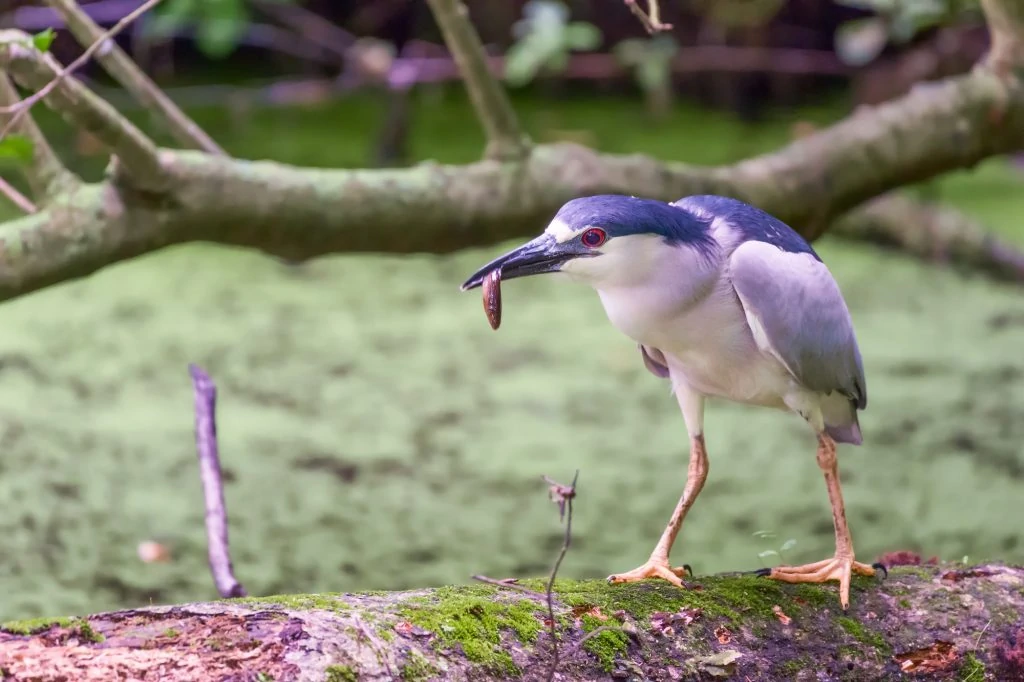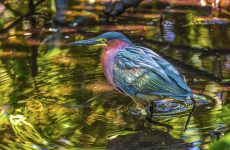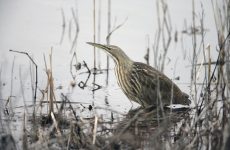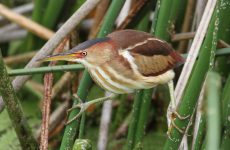
Black-crowned Night-Herons, or simply Night Heron, do not fit the typical description of the heron family. It is quite stocky and has a shorter bill, neck, and legs.
Adult Black-crowned Night-herons have black caps that extend from a white line above their black bills.
Their eyes are red while the lores (area in front of the eye, towards the bill) are green-blue. They are white underneath and darker on the back. Their legs and feet are yellow.
During the breeding season, the black coloring of the head and back turns to a glossy blue-green, and two or three white feathers appear on the crown. The lores also turn black, and the legs and feet become red or pink.
Juveniles are a dull grayish-brown overall with some streaking and spotting.
- Nycticorax nycticorax
- Length: 25 – 28 in (64 – 71 cm)
- Weight: 38.8 oz (1100 g)
- Wingspan: 44 – 45 in (112 – 114 cm)
Range
Black-crowned Night-herons have a vast range around the world. In North America, they breed in the US and Canada before migrating south. Some remain all year along the coasts.
Habitat And Diet
You can find Black-crowned Night-herons in wetland habitats like shallow freshwater or brackish rivers. They are also used to artificial habitats like reservoirs, canals, and fish ponds.
Black-crowned Night-herons are night-feeders and feed on anything they can find, such as crayfish and fish and even turtles or worms.
Black-crowned Night Heron Call:
Nests
Nests of Black-crowned Night-herons are started by the males in preparation for choosing their mates and are usually built in bushes or trees.
The female will then lay up to seven eggs, laid at 2-day intervals. Both parents start to incubate the eggs as soon as they’re laid for about twenty-four days. The parents will take care of their young for about 3 weeks.
Fun Fact:
A colony of Black-crowned Night-herons has spent their summers at the National Zoo in Washington DC, for more than a century.









